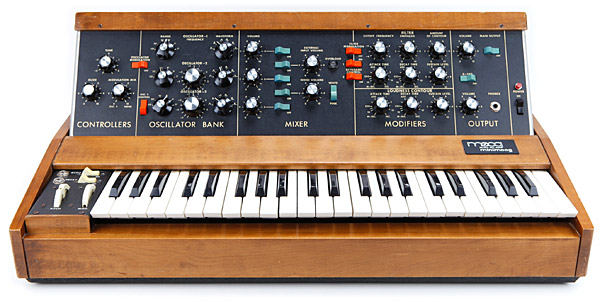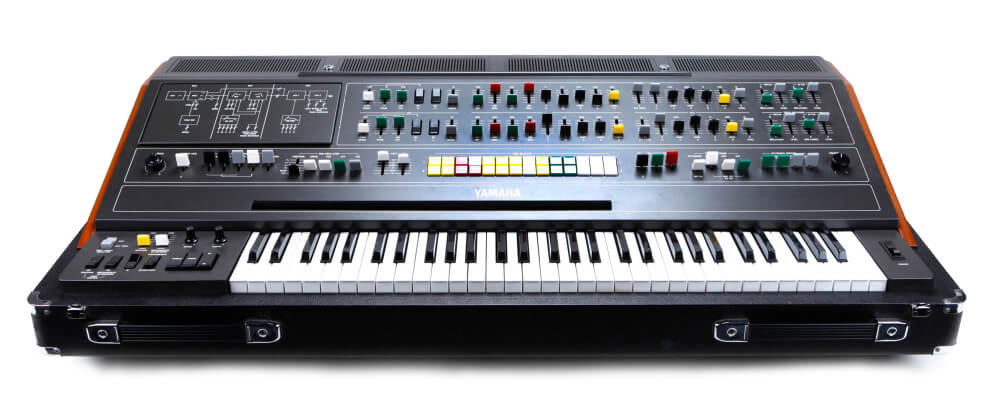How Analog is My Analog Synth? Part One
VCOs and DCOs - what are they and why does it matter? Part One of our article tackles the inner workings of an analog synth at its very core - the oscillator. Learn what a VCO is and what makes it a very special component in an analog synthesizer.

Context
Synthesizers have been around for the majority of the 20th century, from early experiments such as the Trautonium in the ‘20s and ‘30s, to the analog beasts of the ‘70s and early ‘80s and the spree of digital synths of the late ‘80s and ‘90s. In recent years, however, the pro audio industry has seen as a trend emerging – the development of new analog synthesizers. All the major manufacturers including Moog, Korg, Roland, Yamaha and many more have launched modern renditions of their classic designs, alongside newcomers to the market such as Arturia and, reportedly, Behringer.
For those of you not familiar with the subject, analog synthesizers produce sound electronically by using analog circuits and analog signals or, in other words voltages and currents. At the heart of any analog synth lies an oscillator, which, as the name suggests, generates a periodic, oscillating electronic signal. While there are many types of oscillators available, there are generally 2 types used in analog synthesizers.
VCO-s & DCO-s: What are they and why do they matter?
In analog synthesizers, the most common oscillator is called a Voltage-Controlled Oscillator, or VCO in short. The oscillator’s output signal, also called its oscillation (or frequency, or pitch) is dictated by the oscillator’s Control Voltage or CV.
Another type of oscillator featured in many analog synths is called a DCO which stands for you guessed it Digitally Controlled Oscillator. And it is precisely this name that causes confusion for many who perhaps don’t fully understand the concept behind it. Despite the word ‘digital’, this type of oscillator is as analog as it can be.
In this article, I will explain the differences between the two types, so that you can confidently choose your analog synth to best suit your needs. Let’s dive right in!
VCO-s Explained
As mentioned above, a VCO’s name tells us about its basic inner workings – its output frequency is controlled by an input voltage (control voltage or CV). VCOs are based on an electrical component called the capacitor, which has the ability to store an electrical charge and then release it very fast. The rapid charging and discharging of capacitors produces a varying voltage, which will ultimately be perceived as sound. In addition to capacitors, a basic VCO also uses a comparator and a transistor. The comparator does exactly what its name suggests – it compares voltages – while the transistor is a type of 3-pin electrical switch (for simplicity’s sake) which will only pass current from input to output when a voltage is applied to the third pin – sometimes called a base pin.
In practice, this is how the three elements (Capacitor, Comparator, Transistor) that make up a VCO interact:
- A control voltage (CV) is applied to the capacitor which causes it to start charging and thus the voltage across it increases
- The comparator starts to compare its preset voltage to that across the capacitor
- Once the charge in the capacitor reaches the comparator’s threshold, the comparator outputs a current to the base of the transistor
- Acting like a switch, the transistor will ‘open its gate’ allowing the capacitor to fully discharge nearly instantly
- The system is now in its initial state and the cycle is repeated

Looking at this process plotted on a graph of voltage over time reveals a familiar shape – the sawtooth wave. We have therefore discovered that the voltage across the capacitor serves as the audio signal. It is also worth noting that the speed at which the capacitor charges will determine the pitch of the audio signal – the faster it charges, the higher the pitch. If the capacitor charges fast enough, for example 440 times every second, the resulting signal will have a frequency of 440 cycles per second or 440Hz – middle A on the piano. To put things in perspective, using a keyboard’s CV output to control an oscillator will allow you to generate different notes/pitches in relation to each individual voltage on the keyboard – the basis for controlling pitch in VCO-based analog synthesizers.
Use Real Synths on Your Production
It is worth remembering that the components which make up a VCO, namely the Capacitor, Comparator and Transistor are electronic components which have a margin for error and can be prone to faults or malfunctions. All electrical components behave non-ideally – for example, a capacitor’s charge capacity is dependant on its operating temperature. This can explain why a vintage Moog might sound out of tune on a very hot day or why two or more oscillators played in unison can produce a beautiful detuning / phasing effect, making the instrument sound more natural, organic and alive.
Analog synths sound the way they do because the components which make up the instruments are never perfect. Therefore, while the resulting signal will be 100% accurate in theory, the same does not apply in the real world. And, as is the case with most analog gear, the beauty lies in these small imperfections.
In VCO-based instruments, one of the main reasons for concern has to do with the tuning and detuning of the oscillators. All VCOs have a certain degree of instability given by external factors such as temperature. Imagine going on stage in front of thousands of people and not being sure that your synth will play in tune with the rest of the band. We can clearly see how the very thing that makes these instruments so desirable can also have disastrous consequences – this is where DCOs come into play.
Join us in Part Two to find out what a DCO is and how it differs from a VCO. Until then, I'll leave you with the following question:




